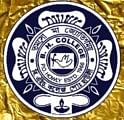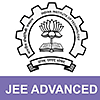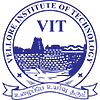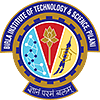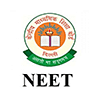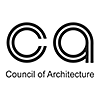Assam AHSEC Syllabus 2025-26: Download Assam HS Syllabus PDF
Table of Contents
The Assam Higher Secondary Education Council releases the Assam AHSEC syllabus 2025-26 on the official website. The syllabus is available for all the stream students in PDF format. The updated syllabus outlines the course structure, topics and chapters. Moreover, students who will be appearing for the board exam must follow the syllabus.
Furthermore, the Assam AHSEC 2025-26 syllabus contains a topic-wise weightage system based on its difficulty and importance. The Assam HS papers will be held for 100 marks, and students have to score a minimum of 30 per cent in all the subjects.
| Assam HS Model Papers 2026 | Assam HS Textbooks |
Assam AHSEC Stream-Wise Syllabus 2025-26 PDFs
The Assam HS syllabus 2025-26 is available on the official website for Physics, Chemistry, Economics, Maths, English and more subjects. The direct link to download the syllabus is provided below.
Assam AHSEC Syllabus 2025-26 PDFs For Science Stream
The Science subject in the Assam HS board exam 2026 will be conducted for 100 marks, out of which 70 will be given for theory and 30 will be provided for practicals. Students can go through the Science stream syllabus mentioned below.
| Subjects | |
| Physics | Download |
| Chemistry | Download |
| Biology | Download |
| Mathematics | Download |
| Economics | Download |
| Statistics | Download |
Assam AHSEC Syllabus 2025-26 PDFs: Arts Stream
The detailed Assam HS syllabus 2025-26 for the Arts stream is presented below for the students' reference. The exams will be held for 100 marks, and students have to secure 30 marks in each subject.
| Subject | |
| Economics | Download |
| Political Science | Download |
| History | Download |
| Logic & Philosophy | Download |
| Psychology | Download |
| Sociology | Download |
| Geography | Download |
Assam AHSEC Syllabus 2025-26 PDFs: Commerce Stream
The Assam AHSEC syllabus 2025-26 for the Commerce stream is provided below for all the subjects. Students have to go through the syllabus to score better marks in the board exam.
| Subject | |
| Accountancy | Download |
| Business Studies | Download |
| Insurance | Download |
| Finance | Download |
| Economic Geography | Download |
| Computer Science & Application | Download |
| Business Mathematics & Statistics | Download |
| Entrepreneurship Development | Download |
| Salesman Advertising | Download |
| Multimedia & Web Technology | Download |
Assam AHSEC Syllabus 2025-26 PDFs: Language-Based Subjects
The Assam HS syllabus 2025-26 for the Language subject is presented below for the students' reference. Students have to check all the important topics and chapters mentioned below.
| Subject | |
| Assamese | Download |
| English | Download |
| Bengali | Download |
| Hindi | Download |
| Sanskrit | Download |
| Advance Assamese | Download |
| Advance Hindi | Download |
| Advance Sanskrit | Download |
Assam AHSEC Syllabus 2025-26: Stream-Wise
The Assam AHSEC syllabus was revised for subjects such as Alternative English, Finance, and Anthropology. The textbook 'VIBGYOR' was replaced by 'Harmony: An Anthology of Prose and Poetry.' Moreover, the Assam AHSEC 2025-26 syllabus for each stream is given in the following sections:
Assam AHSEC 2025-26 Syllabus for Science Stream
Assam AHSEC syllabus 2025-26 for the Science stream consists of Physics, Chemistry, Mathematics, and other subjects. The following are the major subjects in the Assam AHSEC 2025-26 syllabus.
| Subjects under Assam AHSEC Syllabus 2025-26 For Science | ||
| Physics | Chemistry | Biology |
| Mathematics | Biotechnology | Computer Science |
Assam AHSEC Syllabus 2025-26 for Physics
The chapter based on Optics contains the highest marks as per the Assam AHSEC 2025-26 syllabus for physics. Students can go through the following table to get an idea:
| Unit Name | Important Topics | Marks |
| Electrostatics | Electric field lines; Electric flux, Statement of Gauss’s theorem, free charges and bound charges inside a conductor, etc. | 08 |
| Current Electricity | Ohm’s law, electrical resistance, V-I characteristics (linear and non-linear), series and parallel combinations of resistors; temperature, dependence of resistance, etc. | 08 |
| Magnetic Effects of Current and Magnetism | Ampere’s law and its applications to infinitely long straight wires, straight and toroidal solenoids, Magnetic Hysteresis, Electromagnets and factors affecting their strengths, etc. | 08 |
| Electromagnetic Induction and Alternating Currents | Alternating current voltage, peak, and RMS value of alternating current/voltage power, AC generator, transformer, etc. | 08 |
| Electromagnetic Waves | Electromagnetic spectrum: Transverse nature of electromagnetic waves. Need for displacement currents, etc. | 03 |
| Optics | Refraction and dispersion of light through a prism, refraction of light, total internal reflection, and its applications, optical fibres, refraction at spherical surfaces, Young’s double-slit experiment and expression for fringe width, coherent sources and sustained interference of light, etc. | 14 |
| Dual Nature of Matter and Radiation | Photoelectric effects: Hertz and Lenard’s observations; Einstein’s photoelectric equation, Davisson-Germer experiment, etc. | 04 |
| Atoms and Nuclei | Composition and size of nucleus, atomic masses, isotopes, isobars, isotones, etc. | 07 |
| Electronic Devices | Zener diode as a voltage regulator. Junction transistor, transistor action, characteristics of a transistor, etc. | 07 |
| Communication System | Propagation of electromagnetic waves in the atmosphere, sky, and space wave propagation, Elements of a communication system, etc. | 03 |
Assam AHSEC Syllabus 2025-26 for Chemistry
The theory paper for Chemistry under Assam AHSEC 2025-26 contains a total of 100 marks, and the rest of 30 marks are allotted for practical assessment. Students can go through the following table to get an idea:
| Unit Name | Important Topics | Marks |
| Solid State | Unit cells in two-dimensional and three-dimensional lattices, calculation of the density of unit cells, packing in solids, voids, number of atoms per unit cell in a cubic unit cell, etc. | 4 |
| Solutions | relative lowering of vapour pressure, the elevation of boiling point, depression of freezing point, osmotic pressure, etc. | 5 |
| Electrochemistry | Kohlrausch’s Law, electrolysis and laws of electrolysis (elementary idea), dry cell – electrolytic cells and Galvanic cells, etc. | 5 |
| Chemical kinetics | catalyst; order and molecularity of a reaction; rate law and specific rate constant, integrated rate equations and half-life, etc. | 5 |
| Surface chemistry | homogeneous and heterogeneous activity and selectivity; enzyme catalysis; colloidal state: the distinction between true solutions, colloids, suspensions, etc. | 4 |
| General principles and processes of Isolation of Elements | Principles and methods of extraction: concentration, oxidation, reduction, electrolytic method, and refining; occurrence and principles of extraction of aluminium, copper, zinc, and iron, etc. | 3 |
| p-Block Elements | General introduction, electronic configuration, oxidation states, occurrence, trends in physical and chemical properties, etc. | 8 |
| d- and f-Block Elements | interstitial compounds, alloy formation. Preparation and properties of K2Cr2O7 and KMnO4, etc. | 5 |
| Coordination Compounds | coordination number, colour, magnetic properties and shapes, IUPAC nomenclature of mononuclear coordination compounds, etc. | 3 |
| Haloalkanes and Haloarenes | Nomenclature, nature of C-X bond, physical and chemical properties, mechanism of substitution reactions, etc. | 4 |
| Alcohols, Phenols, and Ethers | Nomenclature, methods of preparation, physical and chemical properties, acidic nature of phenols, electrophilic substitution reactions, uses of phenols, etc. | 4 |
| Aldehydes, Ketones and Carboxylic Acids | Nomenclature, acidic nature, methods of preparation, physical and chemical properties, etc. | 6 |
| Organic Compounds containing Nitrogen | Nomenclature, classification, structure, methods of preparation, physical and chemical properties, etc. | 4 |
| Biomolecules | Elementary idea of a-amino acids, peptide bonds, polypeptides, proteins, primary structure, secondary structure, tertiary structure, quaternary structure (qualitative idea only), denaturation of proteins, etc. | 4 |
| Polymers | Natural and synthetic methods of polymerisation (addition and condensation), copolymerization, etc. | 3 |
| Chemistry in Everyday Life | Chemicals in medicines– analgesics, tranquillisers, antiseptics, disinfectants, antimicrobials, antifertility drugs, antibiotics, antacids, antihistamines, etc. |
3 |
Assam AHSEC Syllabus 2025-26 for Biology
The Assam AHSEC 2025-26 syllabus for Biology is divided into two parts, which include Botany and Zoology. Given below is the Assam AHSEC syllabus for Biology:
| Unit name | Important Topics | Marks |
| Group A - Botany | ||
| Sexual Reproduction | Asexual Reproduction, Sexual Reproduction, Apomixis, and Polyembryony, etc. | 6 |
| Genetics and Evolution | Evolution of Life Forms- A Theory, Mechanism of Evolution, A Brief Account of Evolution, Origin and Evolution of Man, etc. | 5 |
| Biology and Human Welfare | Animal Husbandry, Tissue Culture, Microbes in Sewage Treatment, Microbes as Biofertilisers, etc. | 7 |
| Biotechnology and Its Application | Principles of Biotechnology, Tools of recombinant DNA Technology, Biotechnological Applications in Medicine, etc. | 12 |
| Ecology | Organisms and their Environment, Populations, Medicinal and Timber Yielding Plants, etc. | 5 |
| Group B - Zoology | ||
| Reproduction | Pregnancy and Embryonic Development, Medical Termination of Pregnancy, etc. | 5 |
| Genetics and Evolution | Sex Determination, Replication, Human Genome Project, DNA Fingerprinting, etc. | 15 |
| Biology and Human Welfare | Common Diseases in Humans, Drugs and Alcohol Abuse, Single Cell Protein, etc. | 5 |
| Biotechnology and Its Application | Biotechnological Applications in Agriculture, Transgenic Animals, Ethical Issues, etc. | 1 |
| Ecology | Ecological Pyramids, Biodiversity Conservation, Medicinal and Timber Yielding Plants, Degradation by Improper Resource Utilisation and Maintenance, etc. | 9 |
| Total | 70 | |
Assam AHSEC Syllabus 2025-26 for Mathematics
The Assam AHSEC 2025-26 syllabus for Mathematics contains various chapters based on Algebra, Calculus, Statistics, etc. The following is the Assam AHSEC 2025-26 syllabus for Mathematics:
| Chapters | Topics | Marks |
| Algebra | Matrices, the Concept of a matrix and its order and notation, etc. | 13 |
| Relations and Functions | Types of Functions, Types of relations, Inverse Trigonometric functions, Basic concepts, etc. | 10 |
| Calculus | Application of Derivatives, Continuity and Differentiability, Integrals, etc. | 44 |
| Vectors, Algebra, and Three-Dimensional Geometry | Vectors and scalars, Cartesian and vector equation of a plane, Magnitude and direction of a vector, etc. | 17 |
| Probability | Conditional Probability, Multiplication Theorem on Probability, Total Probability, Independent Events, Bayes Theorem, etc. | 10 |
| Linear Programming | Introduction, Objective Function, Related Terminology such as Constraints, Different Types of Linear Programming, Optimisation, etc. | 06 |
| Total | 100 | |
Assam AHSEC Syllabus 2025-26 for Commerce Stream
Assam AHSEC syllabus 2025-26 for the commerce stream consists of subjects such as Business Studies, Accountancy, Economics, and many more. Refer to the table below for more details.
| Subjects under Assam AHSEC Syllabus 2025-26 For Commerce | ||
| Accountancy | Business Studies | Economics |
| Insurance | Finance | Statistics |
Assam AHSEC Syllabus 2025-26 for Business Studies
Go through the following table to get an idea of the chapters and important topics included in the Assam AHSEC 2025-26 syllabus for Business Studies:
| Unit No. | Unit Name | Important Topics | Marks |
| Part A - Principles and Functions of Management | |||
| Unit I | Nature and Significance of Management | Management– concept, objectives, importance, Nature of management; Management as Science, Management functions - planning, organising, staffing, directing and controlling, ETC. | 8 |
| Unit II | Principles of Management | Principles of Management — meaning, nature, and significance, Fayol’s Principle of Management, Taylor’s Scientific Management– Principles and Techniques, etc. | 8 |
| Unit III | Business Environment | Business Environment– meaning and importance, Dimensions of Business Environment— Economic, Social, Technological, Political and Legal, etc. | 8 |
| Unit IV | Planning | Meaning, features, importance, limitations, types of Plans- Objectives, Strategy, Policy, Procedure, Method, Rule, Budget, Programme, etc. | 8 |
| Unit V | Organizing | Meaning and importance: Formal and information organisation, Difference between delegation and decentralisation, etc. | 8 |
| Unit VI | Staffing | Meaning, need, and importance of staffing, steps in the staffing process, Selection– meaning and process, etc. | 8 |
| Unit VII | Directing | Meaning, importance, and principles, Motivation- meaning and importance. Maslow’s hierarchy of needs, etc. | 8 |
| Unit VIII | Controlling | Meaning and importance: Steps in the control process, Techniques of control, etc. | 8 |
| Part B - Business Finance and Marketing | |||
| Unit IX | Financial Management | Capital Structure– Meaning and factors, Financial planning– meaning and importance, etc. | 10 |
| Unit X | Financial Markets | Capital Market: nature and types– primary and secondary market, Distinction between capital market and money market, etc. | 10 |
| Unit XI | Marketing | The distinction between marketing and selling, Product —nature, classification, branding, labelling, packaging, etc. | 10 |
| Unit XII | Consumer Protection | Consumer rights, Way and means of consumer protection — Consumer awareness and legal redressal with special reference to the Consumer Protection Act, etc. | 6 |
| Unit XIII | Entrepreneurship Development | -- |
6 |
Assam AHSEC Syllabus 2025-26 for Accountancy
The Assam AHSEC 2025-26 syllabus for Accountancy contains chapters such as Accounting for Partnership Firms, Company Accounts and Analysis of Financial Statements, Computerised Accounting System, etc.
The following is the Assam AHSEC 2025-26 syllabus for accountancy.
| Chapters | Topics | Marks |
| Accounting for Partnership Firms | Accounting for Partnership- Basic Concepts | 12 |
| Reconstitution of a Partnership Firm- Admission of a Partner | 10 | |
| Reconstitution of a Partnership Firm: Retirement/Death of a Partner | 10 | |
| Dissolution of a Partnership Firm | 08 | |
| Company Accounts and Analysis of Financial Statements | Accounting for Share Capital | 10 |
| Financial Statements of a Company | 08 | |
| Issue and Redemption of Debentures | 08 | |
| Cash Flow Statement | 06 | |
| Accounting Ratios | 04 | |
| Analysis of Financial Statements | 06 | |
| Computerised Accounting System | Overview of Computerised Accounting System | 12 |
| Graphs and Charts for Business Data | 08 | |
| Accounting Applications of Electronic Spreadsheets | 12 | |
| Using a Computerised Accounting System | 08 |
Assam AHSEC Syllabus 2025-26 for Economics
The economics subject under the AHSEC 2025-26 syllabus is divided into two segments, which include macroeconomics and microeconomics. Refer to the table below for more details.
| Unit name | Important Topics | Marks |
| Part A - Introductory Microeconomics for Class 11 | ||
| Introduction | Central problems of an economy, production possibility curve and opportunity cost, microeconomics, etc. | 4 |
| Consumer Behaviour and Demand | meaning and attainment of equilibrium through Utility Approach: One and two commodity cases, measurement of price, the elasticity of demand– percentage, total expenditure, geometric methods, etc. | 13 |
| Producer Behaviour and Supply | Production function, Supply, Cost and Revenue, etc. | 15 |
| Forms of Market and Price Determination | Forms of the market– perfect competition, monopoly, monopolistic competition– their meaning and features, etc. | 10 |
| Simple applications of the Tools of demand and supply | rationing, floors and ceilings, and Food Availability Decline (FAD) Theory, etc. | 08 |
| Part B - Introductory Macroeconomics for Class 12 | ||
| National Income and Related Aggregates | Circular flow of income, concepts of GDP, GNP, NDP, NNP, Measurement of National Income– Value Added method, Income method and Expenditure method, etc. | 15 |
| Determination of Income and Employment | Determination of income and employment: two-sector model, Problems of excess and deficient demand, etc. | 12 |
| Money and Banking | Money: meaning, evolution, and functions, Recent significant reforms and issues in the Indian Banking System: privatisation and modernisation, etc. | 8 |
| Government Budget and the Economy | Government budget– meaning and its components, Objectives of the government budget, etc. | 8 |
| Balance of Payments | Foreign exchange rate– meaning (fixed and flexible), merits and demerits; determination through demand and supply, A brief analysis of recent exchange rate issues, etc. | 7 |
| Total | 100 | |
Assam AHSEC 2025-26 Syllabus for Arts Stream
Assam AHSEC syllabus 2025-26 for the arts stream consists of subjects such as Economics, History, Advanced Hindi, and other subjects. Refer to the table below for more details.
| Subjects under Assam AHSEC Syllabus 2025-26 For Arts | ||
| Political Science | Sociology | History |
| Education | Logic and Philosophy | Geography |
Assam AHSEC Syllabus 2025-26 for History
The AHSEC 2025-26 syllabus for History mainly includes chapters based on Ancient, Medieval, and Modern India. Refer to the table below for more details.
| Chapters | Topics | Marks |
| Archaeology, Ancient India & Assam through the ages | The Story of the First Cities: Harappan Archaeology Broad | 35 |
| Political and Economic History: How Inscriptions tell a story | ||
| Social Histories: Using the Mahabharata | ||
| A History of Buddhism: Sanchi Stupa | ||
| Medieval India | Agrarian Relations: The Ain-i-Akbari | 25 |
| The Mughal Court: Reconstructing | ||
| New Architecture: Hampi | ||
| Religions Histories: The Bhakti-Sufi Tradition | ||
| Medieval Society through Travellers | ||
| Modern India | Colonialism and Rural Society: Evidence from Official Reports | 30 |
| Representations of 1857 | ||
| Colonialism and Indian Towns: Town Plans and Municipal Reports | ||
| Mahatma Gandhi Through Contemporary Eyes | ||
| Partition through Oral Sources | ||
| The Making of the Constitution | ||
| Map Work | 10 | |
Assam AHSEC Syllabus 2025-26 for Political Science
The chapters covered in the political science under the Assam AHSEC 2025-26 syllabus are given below in the table:
| Chapters | Topics | Marks |
| Politics in India Since Independence | Era of One-Party Dominance | 6 |
| Challenges of Nation-Building | 6 | |
| India’s Foreign Policy | 6 | |
| Challenges to and Restoration of the Congress System | 4 | |
| Politics of Planned Development | 6 | |
| The Crisis of Democratic Order | 4 | |
| Indian Politics: Recent Trends and Development | 4 | |
| Regional Aspirations | 4 | |
| Contemporary World Politics | The End of Bio-Polarity | 6 |
| International OrganisationsContemporary Centre of Power | 6 | |
| Security in the Contemporary World | 6 | |
| Contemporary South Asia | 6 | |
| Environment and Natural Resources | 6 | |
| Globalization | 4 | |
| Project | Project Work | 20 |
Assam AHSEC Syllabus 2025-26 for Sociology
Social Change and Development in India and Indian Society are the two main chapters that are included in the AHSEC 2025-26 syllabus for Sociology. Refer to the table below for more details.
| Chapters | Topics | Marks |
| Social Change and Development in India | Cultural Change | 5 |
| Structural Change | 5 | |
| Change and Development in Industrial Society | 10 | |
| Change and Development in Rural Society | 10 | |
| Social Movements | 10 | |
| Indian Society | Introducing Indian Society | Non-evaluative |
| Patterns of Social Inequality and Exclusion | 10 | |
| The Demographic Structure of Indian Society | 10 | |
| Social Institutions: Continuity and Change | 10 | |
| Suggestions for Project Work | Non-evaluative | |
| The Challenges of Cultural Diversity | 10 | |
| Project Work | 20 | |
Assam AHSEC Syllabus 2025-26 for Language-Based Subjects
Assam AHSEC Syllabus 2025-26 for language-based subjects mainly consists of English, Hindi, Assamese and Bengali. The following is the Assam AHSEC 2025-26 syllabus for language-based subjects.
| Language-Based Subjects under Assam AHSEC Syllabus 2025-26 | ||
| English | Hindi | Assamese |
| Advanced Manipuri | Advanced Assamese | Advanced Hindi |
| Advanced Bodo | Advanced Bengali | Advanced Sanskrit |
Assam AHSEC Syllabus 2025-26 for English
The AHSEC 2025-26 syllabus for English subjects mainly comprises reading, writing, and grammar skills. Refer to the table below for more details.
| Sections | Marks |
| Section A: Reading Skills, Reading unseen prose passage | 10 |
| Section B: Advanced Writing Skills | 25 |
| Section C: Grammar | 20 |
| Narration: Direct and Indirect (4 marks) Voice (3 effects)Tenses (5 marks) Proposition (4 effects) Transformation of Sentences (4 marks) | |
| Section D: Prescribed Books | 45 |
| FlamingoVistas |
Steps to Download Assam AHSEC 2025-26 Syllabus
Students can also visit the board's official website to download the latest Assam AHSEC syllabus 2025-26 by following the detailed steps given below. Candidates must execute these steps to download the Assam AHSEC 2025-26 syllabus:
- Step 1: Visit AHSEC's official website.
- Step 2: Select the "Syllabus" option under the "Academics" tab on the homepage.

- Step 3: Go to the "Syllabus and Curriculum" section.
- Step 4: Click on the "Assam AHSEC 2025-26 syllabus:" link to download the preferred stream syllabus.
- Step 5: Download and save the syllabus in PDFs for further reference.
Refer to the image mentioned below to follow the steps to download the Assam HS syllabus.
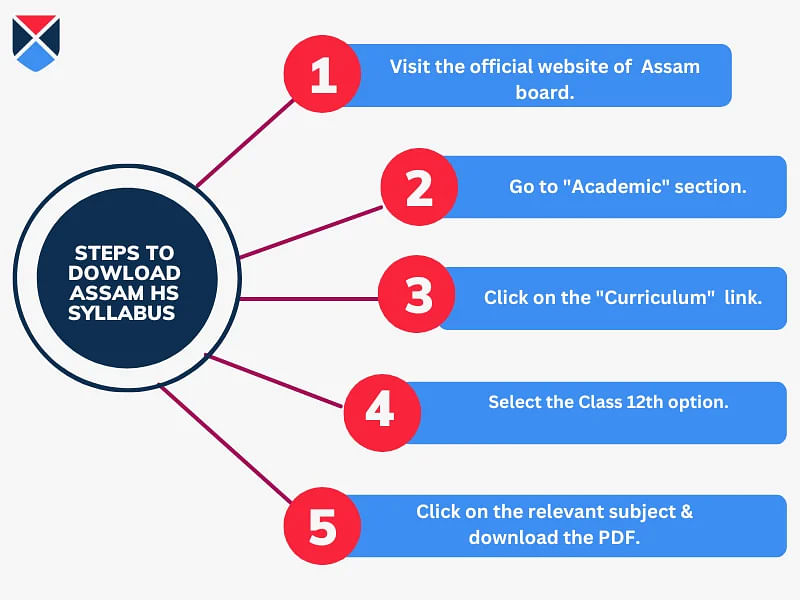
Importance of Assam HS Syllabus 2025-26
The Assam AHSEC syllabus 2025-26 is the most valuable resource for the candidates because it helps the students to understand the marking scheme and important topics. Some of the important points regarding the Assam HS syllabus are presented below:
- The syllabus outlines the important topics and chapters that must be covered in the board exam.
- All the important information regarding all the subjects is presented in the Assam HS syllabus 2026.
- It will help the students to understand the course curriculum and other important information.
- The detailed syllabus will help the students to score better marks in the board exam.
What are the Benefits of using the Athe ssam AHSEC Syllabus 2025-26?
There are many benefits of using the Assam HS syllabus 2025-26. Some of the important benefits are mentioned below for the students' reference.
- The updated syllabus includes the weightage for each topic, which will help the students to strategise their preparations accordingly.
- The question paper design pattern is also included in the Assam HS syllabus 2025-26, which will help the students to understand the question type.
- Understanding the syllabus thoroughly will help the students to score better marks in the board exam.
- The question pattern in the Assam HS board exam will be entirely based on the syllabus.
FAQs on AHSEC HS Syllabus
Q: From where can we download the Assam AHSEC syllabus 2025-26?
Q: What are the compulsory subjects for all streams according to Assam AHSEC syllabus?
Q: Has the Assam AHSEC syllabus been reduced?
Q: Are questions asked in the Assam HS exam based strictly on the Assam AHSEC syllabus 2025-26?
Q: What are the passing criteria for the AHSEC exam, as mentioned in the Assam AHSEC syllabus 2025-26?

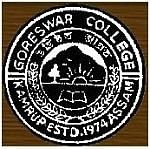

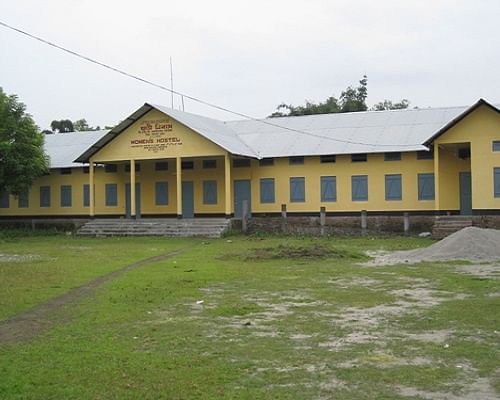
![B.H.B College, [BHBC] Sarupeta](https://media.getmyuni.com/azure/college-image/small/bhb-college-bhbc-sarupeta.jpg)


